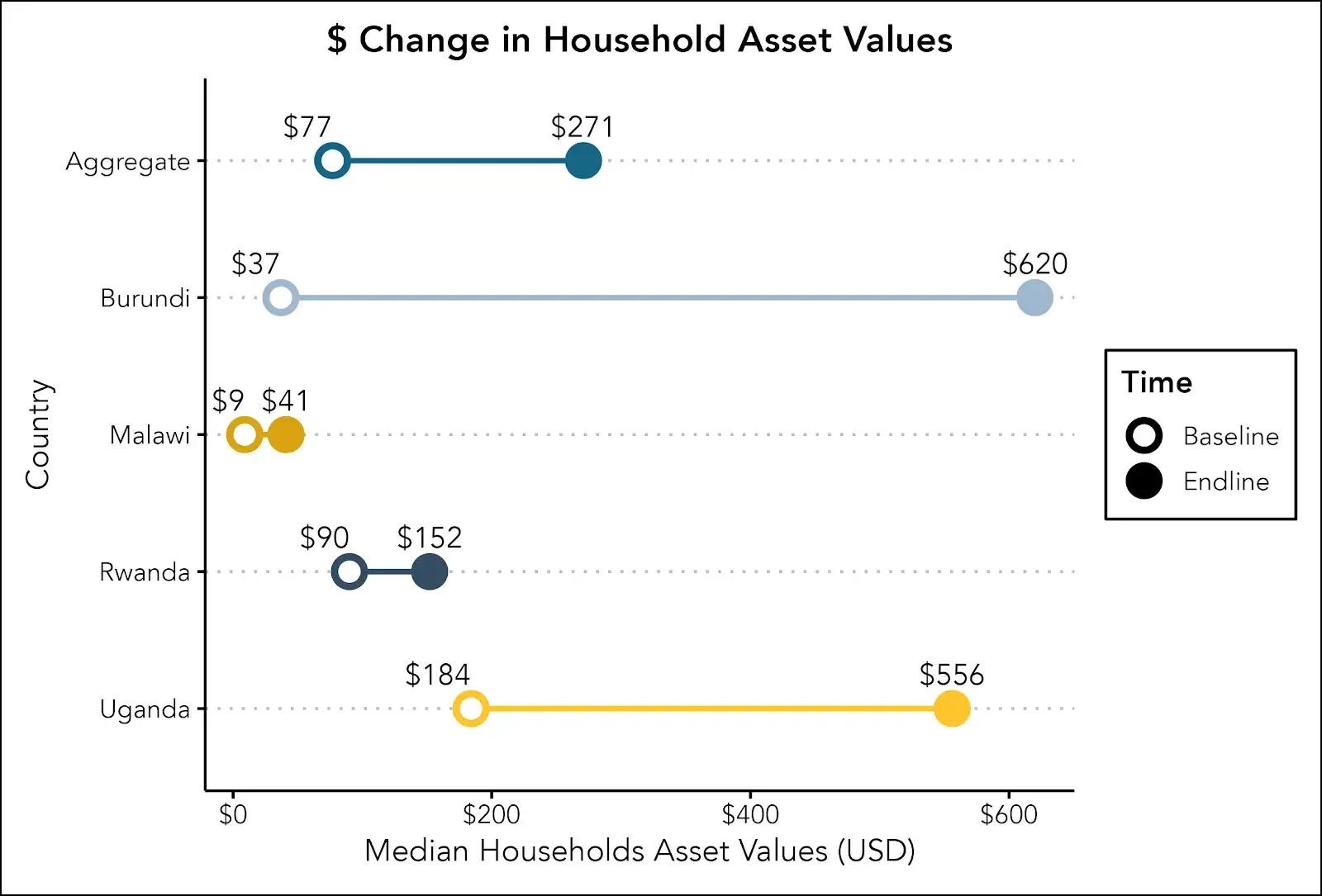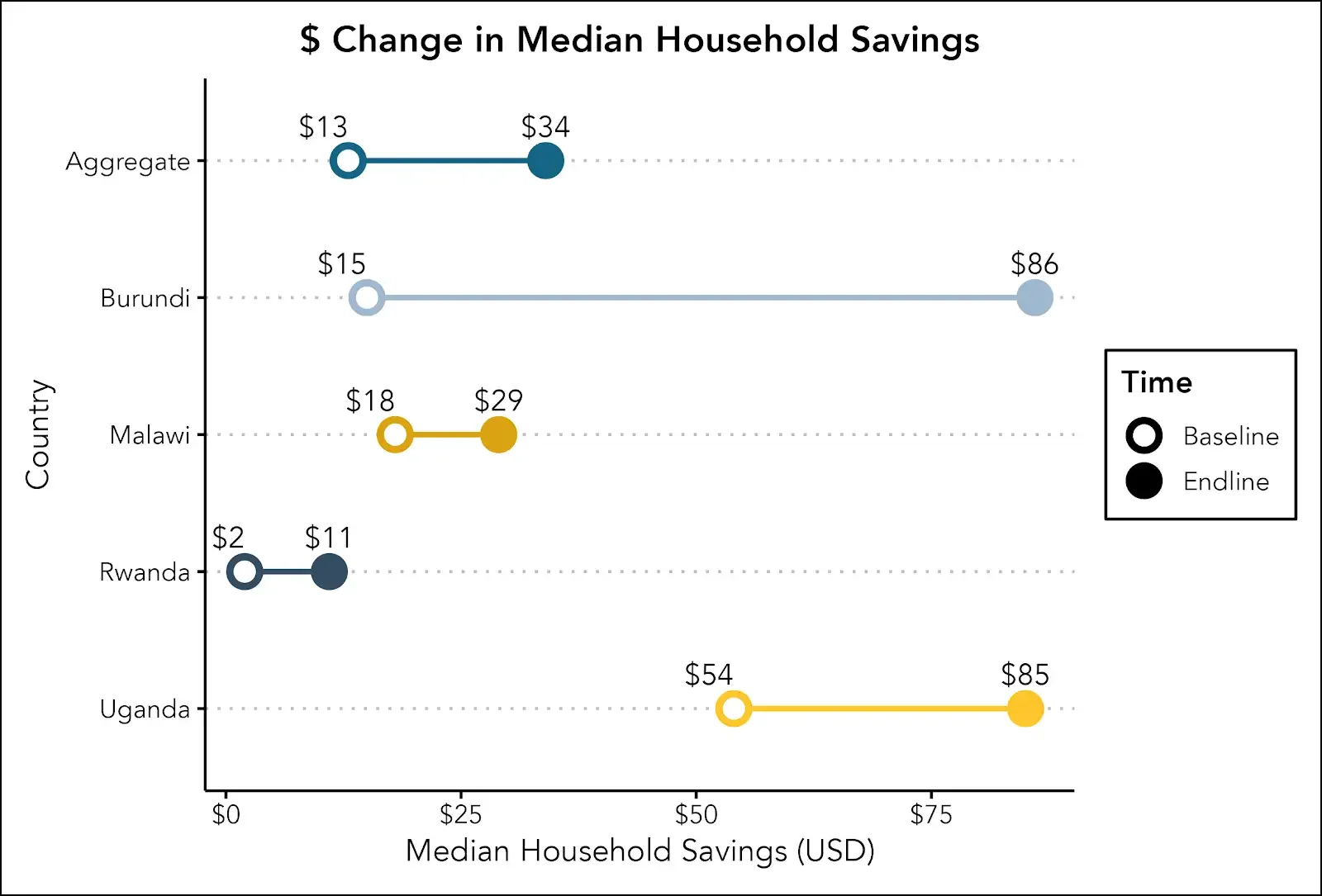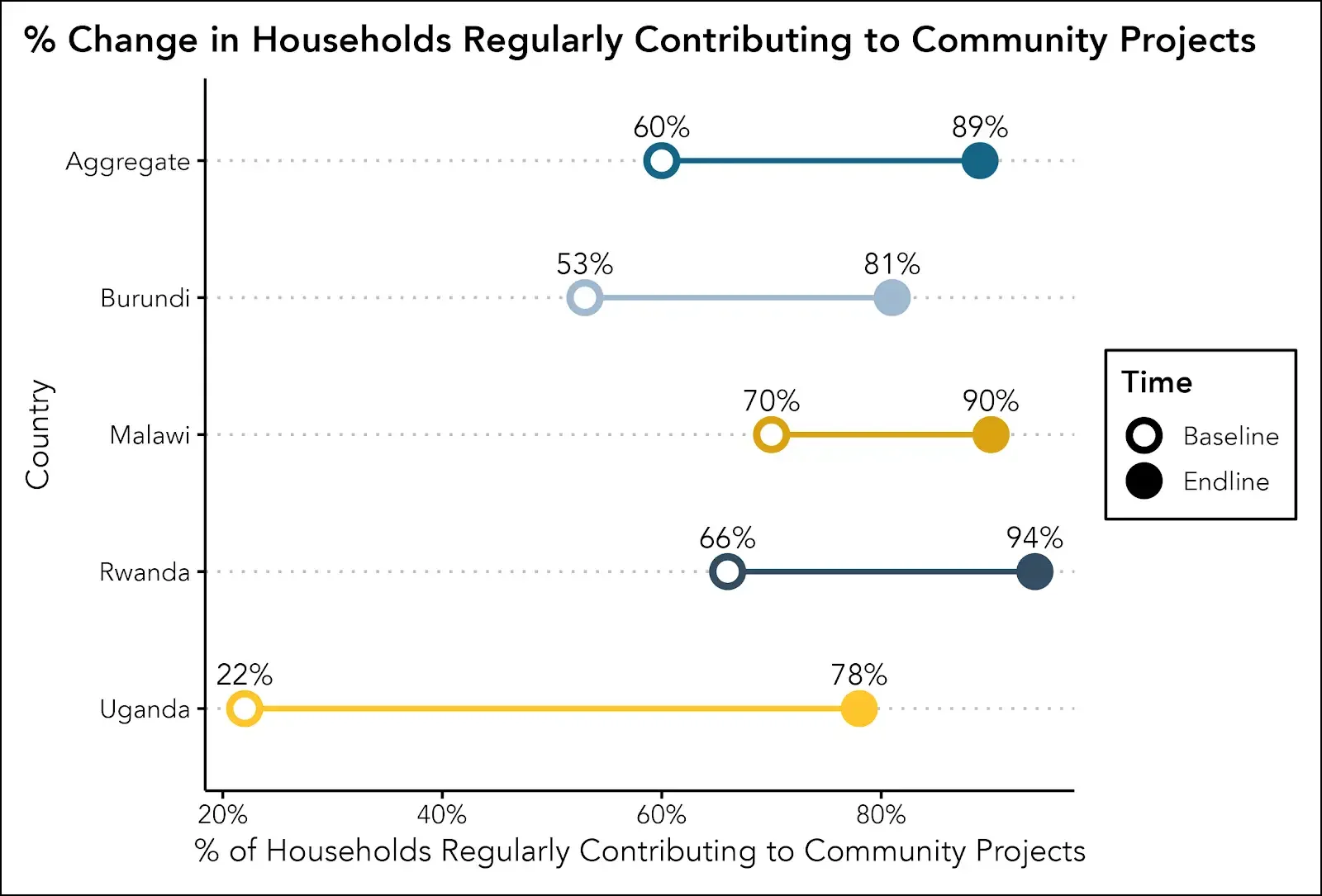2024 Impact Report
April 2025
In April, Spark’s M&E team published the 2024 Annual Impact Report, showcasing how the FCAP leads to livelihood and civic gains across geographies. After just two years of Spark’s FCAP, average household asset values have grown by 249%, and household savings increased by 160%. These impacts are even more profound in the poorest of households - those in the lowest wealth quartile see an over 20-fold increase in asset values, and 14% of households have moved into higher wealth quartiles. The data presented highlight the incredible impacts that occur when families determine their own future.
Household Assets
Median household asset values rose by 249% two years after starting FCAP. Notably, asset values increase most for families in the lowest wealth quartile, from an average of $9 to $225 across all countries, a 2,577% increase. Growth varies by country; in Malawi, we see a more modest 75% increase, with more communities investing in microenterprises for long-term benefits. In Burundi, asset values grew by 1,575% from baseline, likely due to the popularity of cattle investments, which have immediate value.
Household Savings
The proportion of households saving money increases by 39% over the course of the FCAP, from 66% to 92%. Not only does the overall percentage of households that are saving increase, but households also put more money into savings - an increase of 160% on average, ranging from 58% in Uganda to 650% in Rwanda.
Community Action
At endline, 64% of individuals report an increase in community action. A key facet of citizen engagement is individual drive to engage in the improvement of their own community, as well as the overall willingness of the community to work together. At baseline, 60% of community members report participating in community projects. By endline, contributions to community projects increase by 48% across countries, up to 89%. In Uganda, where the contribution to community projects was the lowest at baseline, this improved by 254%.




